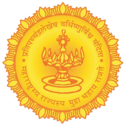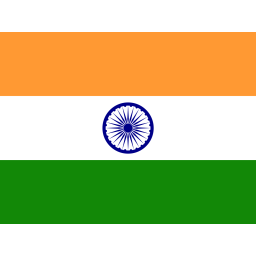Raj Bhavan Nagpur
Raj Bhavan Nagpur: Witness to History

Of the three Raj Bhavans in Maharashtra, – one each in Mumbai, Pune and Nagpur – the majestic Raj Bhavan at Nagpur has a history of its own. Built in the year 1891 on the crest of the plateau of the Seminary Hills on an area of about 100 acres, the ‘Government House’ has been a silent witness to the transformation of a historic region.
The grand edifice built as the residence of the Chief Commissioner of Central Provinces has seen the strong currents of freedom movement leading to the Independence of India and later witnessed the formation and reformation of territorial boundaries of the province.
Importantly, the Raj Bhavan Nagpur, known locally as ‘Governor Kothi’ has witnessed the transformation of the small town of Nagpur into a major city of India.
According to eminent historian and author of ‘Raj Bhavans in Maharashtra’, the year 1891 was memorable for Nagpur in many ways. In that year, Nagpur played host to the 7th session of the All India Congress Committee which was presided over by Shri Anandacharalu and attended, among others, by A P Macdonnel, Chief Commissioner of the Central Provinces. A P Macdonnel was the first occupant of the Raj Bhavan in Nagpur.
While Central Provinces came into existence vide the Government of India, Foreign Department Resolution No 9 dated 2nd November 1861, Berar was transferred to the care of the Chief Commissioner of the Central Provinces in 1903 and the combined territory came to be commonly known as ‘ C P & Berar’. History of Raj Bhavans of Maharashtra mentions that around this time the Chief Commissioner’s office was referred to as ‘Gondwana Gubernatoris’.
In the year 1920, the Central Provinces, along with a few other provinces, were brought under the administrative control of the Governor in Council. Sir F. Sly the then Commissioner became the First Governor of the Central Provinces on 17th December 1920.
The elections of 1946 brought in Pt Ravi Shankar Shukla as the Chief Minister of the Central Provinces and when India became independent, Mangaldas Pakwasa took over as the Governor and Pt Ravi Shankar Shukla as the ‘Prime Minister’ of Madhya Pradesh as the province was then designated. B. Pattabhi Sitaramayya also served as the Governor of Madhya Pradesh from 1952 to 1956. With the passage of the States Reorganization Act, 1956 and the formation of the Bilingual State of Bombay, Nagpur, along with six other districts of Vidarbha, which had earlier formed parts of the State of Madhya Pradesh, became a part of the Bombay State. Nagpur thus became a part of Bombay State on 1st November 1956 when the Act came into force.
In the year 1960, with the passing of the Bombay Reorganization Act, the bilingual Bombay was bifurcated into two new States – Gujarat and Maharashtra on 1st May 1960.
The house of the Chief Commissioner of Central Provinces now assumed a new role as the Raj Bhavan of Maharashtra. On 9th August 1988 Nagpur was given the status of the Second Capital of Maharashtra.
Thus in its 125 years history, the Nagpur Raj Bhavan acquired a distinct chronology:
1891 House of the Chief Commissioner, Central Province
- 1891 House of the Chief Commissioner, Central Province
- 1903 House of the Chief Commissioner, CP and Berar
- 1920 Government House of the Governor of Central Provinces
- 1947 Government House of the Governor of Madhya Pradesh
- 1956 Government House of the Governor of Bombay
- 1960 Government House of the Governor of Maharashtra
- 1988 Raj Bhavan in the second capital of Maharashtra
The Edifice of Raj Bhavan Nagpur:
The Raj Bhavan Nagpur located on an area of 94 acres is easily the biggest in the geographical area when compared to the Raj Bhavans in Mumbai and Pune. Its entrances are open in different localities of Nagpur!
A plaque at the entrance porch of the Raj Bhavan mentions ‘Erected 1891: E. Penny Ex Eng” confirming the date of its occupation. The building is a fine blend of vernacular style and colonial taste. The entire house is built on a low rectangular plinth approximately 240 x 150 ft and faces a large circular lawn which adds to its elegant setting. The overall built-up area is 3237 square meters. It is apparent that the construction of the house must have taken 2- 3 years.
Unlike the Raj Bhavan in Mumbai where there are separate buildings named as Banquet Hall and the Darbar Hall, the Raj Bhavan Nagpur has the Ballroom and the Drawing Room and the Dining Hall in the same building. The building has Governor’s office, residential area and six rooms for the officers of the Governor.
The sloping roof has single and double rows of Allahabad tiles over the veranda and the main building.
It has been recorded that at one point of time, Raj Bhavan Mumbai had a horse stable with 72 horses. In Nagpur, there was a stable for elephants! While the horse stable in Mumbai transformed itself into a car garage, the stable in Nagpur now is part of the extension of the kitchen area.
The lawn outside Raj Bhavan has two cannons, said to have been brought from Asirgarh Fort. The larger bronze cannon is embellished with an incised design and Persian inscription and is dated A H 1074 ( A D 1663) in the reign of Aurangazeb, the other, a smaller iron cannon, has an inscription in Hindi, giving its name as ‘Kadua Padma’.
The Flag post adjacent to the smaller cannon is perhaps the tallest flag post in Nagpur.
The Governor shifts his residence to the Nagpur Raj Bhavan when the Legislature holds in the winter session. The Nagpur Raj Bhavan also hosts the President of India, the Vice President of India and the Prime Minister during their occasional visits to Nagpur.
In the year 2011, a biodiversity park was created on 70 acres of the area of Raj Bhavan Nagpur. Raj Bhavan Nagpur is home to 1.50 lakh trees. The Park was developed by the Forest Development Corporation of Maharashtra with financial assistance from MOIL. Various theme-based gardens such as Rose Garden, Cactii Garden, Nakshatra Van, and Butterfly Garden have been developed at the Biodiversity Park. A nature trail has also been created. The Biodiversity Park has become a favourite ‘nature joint’ for school children not just in Nagpur but in the entire Vidarbha.
A 10 KW solar power plant was commissioned. Solar power helps to power street lights in the campus.
The Central Groundwater Board has done soil and water conservation work in Raj Bhavan Nagpur as a demonstration project. Under the project 49 Gabion Bunds, Nala Bunds and Cement Bunds have been created.
It has become a custom for Governors to host a high tea for legislators and prominent personalities in Nagpur. This reception, known as ‘At Home’ reception is held when the Legislature is in session in the month of December. The Chief Minister, Members of his Cabinet and Presiding Officers and legislators attend the reception.
Raj Bhavan, Nagpur which once symbolized the Imperial Power has transformed itself into the highest institution in a democratic set-up in the State.
(Source: Raj Bhavans of Maharashtra by Sadashiv Gorakshkar)



